What it's like to spend a day with Pokemon Go
Time to catch 'em all - again
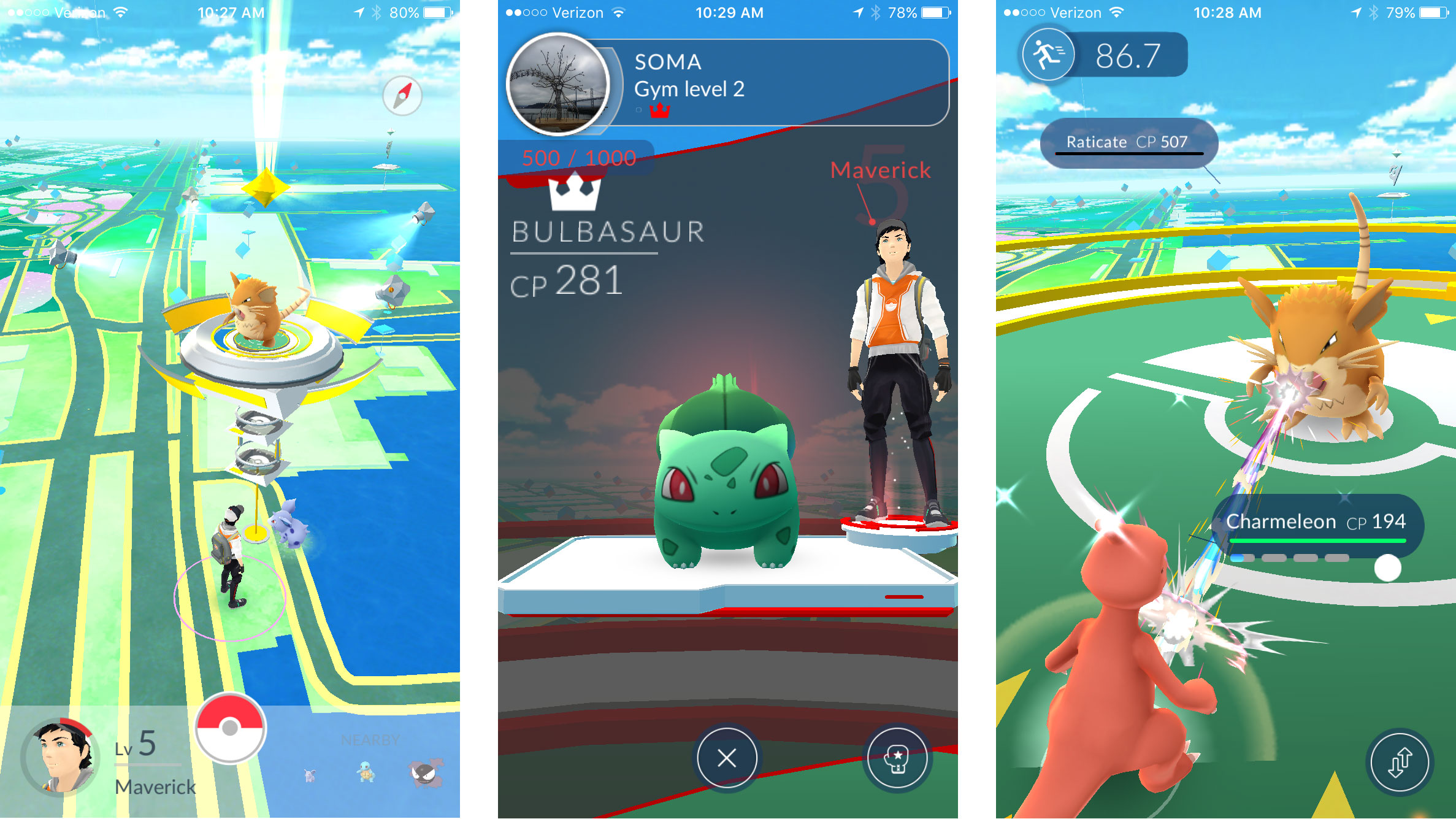
For years, gamers have yearned for a full blown, online Pokémon multiplayer game. It might sound like a realisable dream but it's clear that Nintendo and the Pokémon Company would prefer to keep their Pocket Monsters, well, in our pockets for now.
Pokémon Go finds an interesting middle ground, using our smartphones to bring Pokémon into the real world through the power of maps and the magic of augmented reality.
To make Go the Pokémon Company brought in Niantic, the company responsible for mobile augmented reality multiplayer hit Ingress, and lead by Google Maps creator John Hanke. In Ingress, players join teams and fight for control of "portals" found at landmarks, monuments, and other real-world points of cultural significance.
Over the three years the game has been live, Niantic has relied on users to flag up more and more of these points of interest, particularly in more rural locations, which the developers have then fed into the game. The number of portals has grown from tens of thousands to millions, and it's this trove of data that Pokémon Go is built upon.
To catch them is my real test
Unlike Ingress, which can be overwhelming to a new player landing in the middle of a global turf war, Pokémon Go is much better at easing in newbies. "You'll be discovering Pokémon in minutes," Niantic's John Hanke promises me when I visit the Pokémon Company to try the game's beta.
Pokémon Go wants you to discover and catch wild Pokémon with your smartphone while out in the real world, bringing the dream of being a real Pokémon trainer the closest to reality as it will probably ever be. The game draws on Niantic's rich map data to make Pokémon show up at locations like your local park, on the beach, or in a forest. Don't be surprised if you even get ambushed in your back garden.
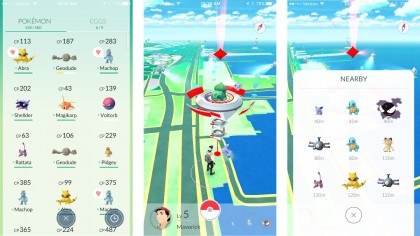
But all of the action takes place on your smartphone screen, and while the game pulls some neat tricks with the camera it's possible to play without it.
Get daily insight, inspiration and deals in your inbox
Sign up for breaking news, reviews, opinion, top tech deals, and more.
For my demo I was taken to Chiswick House gardens, which was filled with Pokémon, Poke Stops (where you can purchase items), and even a couple of gyms (which you can capture and battle in - more on that later).
As I roamed the gardens, circular patches highlighted where wild Pokémon could be hiding, and in a place like Chiswick gardens they weren't in short supply. One of the cleverest things about Go is the way it distributes Pokémon to locations you'd expect to find them in the traditional games: grass Pokémon will appear in parks; water types like Krabby can be seen near lakes and beaches; and rock-type Pokémon like Geodude will huddle in caves and other rocky terrains.
When a Pokémon icon appears on one of these patches you can try to catch it by tapping on it. It took less than a minute before a wild Abra appeared in my demo - obviously I wanted to bag it.
This is where the augmented reality element of Go comes in, using the camera to superimpose the Pokémon in the real world. It's a neat idea that helps create the facade of being on a Pokémon adventure, although it wasn't always executed elegantly during my demo - there were times where the Pokémon hovered awkwardly in mid-air.
However, I should stress that this isn't the final game, and some of the AR bugs might be ironed out before launch. Alternatively you can choose to have the Pokémon appear on a generic colored background instead, but I think most people will prefer the blending of virtual and real worlds.
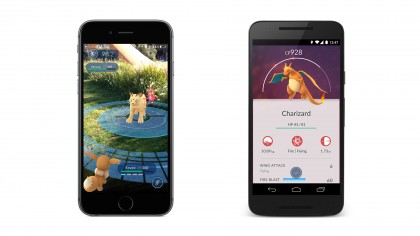
Capturing a Pokémon is done by flinging Poke Balls at it on the touchscreen. The trick, I found, was to just throw it as hard as I could, but even then there's no guarantee of ensnaring your monster. Poké fans are all too familiar with those tense few seconds between snagging a Pokémon and waiting for your prize to stop struggling and resign itself to captivity. Once it's in, it's yours; if you're unsuccessful then you can keep trying - unless it runs away first.
More powerful Poké Balls will increase your chance of capturing Pokémon, and can be bought at the Poké Stops, which show up at points of interest - blue plaques, memorials etc. This is where you can also buy items like lure patches, which attract Pokémon to you, and eggs, which will hatch after you've walked a certain distance. Microtransactions will be included, but it's not yet clear how these will work.
"We're not trying to recreate the 3DS experience, we're trying to build something different."
Hanke won't tell me exactly how many Pokémon will be in the game at launch ("We think part of the fun of the game is going to be people trying to figure that out") but it's over 100, and old-school fans will be delighted to know they've all been taken from the original 150 set. However Hanke hints that more will come after launch.
"There are a lot of Pokémon in the Pokémon universe, and there will be some of those that come in day one and there may be more in the future."
Different Pokémon also have different rarities, and Hanke believes there's potential to do some interesting things with distributing more unique monsters in the future.
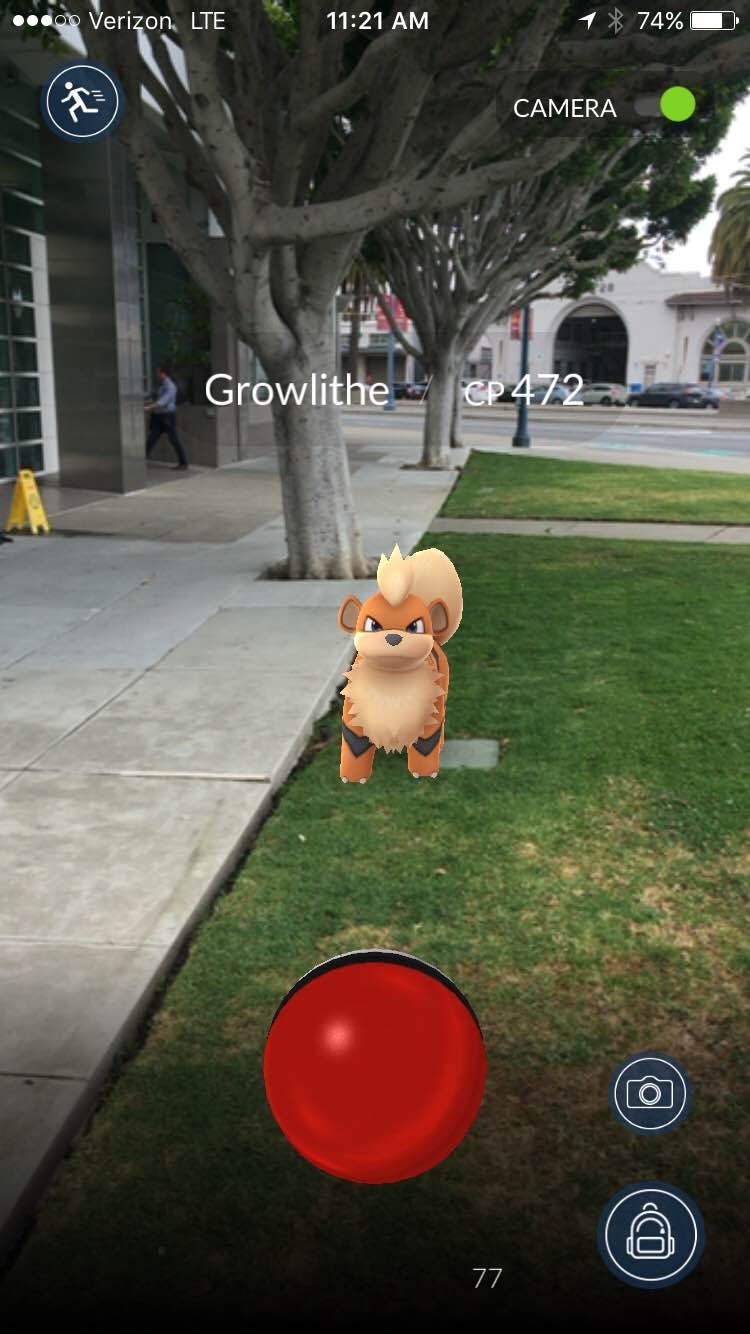
"Pokémon in the past has done really interesting things with the trading card game in terms of really rare Pokémon being available in certain places at certain times," he says. "There's some inspiration there we can draw on.
Now, we're in a park in the middle of London - Pokémon are in abundance, Poké Stops frequent, and there's a gym just a few meters away - but what about gamers who aren't in bustling metropolises?
"We want it to work in a rural village as well as central London," says Hanke. "Or in southern India or Thailand or the Philippines. But by allowing players to submit the things they find interesting it naturally allows us to fill in in areas where people were intrigued by playing this type of game.
"So if someone booted up this game in some rural town in the Philippines and there weren't any portals, they could go find an old church or other artistic thing and submit it."
A member of the Pokémon team tells me a funny story about how one company exec recently took a holiday to a Mediterranean Island to discover a gym there was already captured by someone else.
"You have to move in Pokémon Go to hatch your egg. That's a very direct learning from Ingress"
The game is currently only in beta in Australia, New Zealand, Japan and (as of May 25) the US, so the culprit was clearly another holiday goer. It was an interesting example of how much reach this game will have.
To train them is my cause
Gyms are one of Go's most interesting features, and another that draws on the Ingress's turf-control gameplay. Like Poké Stops, gyms appear at notable landmarks around the world and are differentiated by color: red, yellow and blue (see what they did there?).
If you stumble upon an empty gym you can simply claim it for your own team, but if it belongs to a rival color then you'll have to defeat the Pokémon inside using your own monsters. Or, if you find that already belongs your team you can strengthen it by adding one of your own Pokémon to it.
Pokémon have different levels of strength, which is indicated by what's called CP. As you progress through the game your trainer will earn experience points and level up - the more experience you have the higher the CP of the Pokémon you'll encounter.
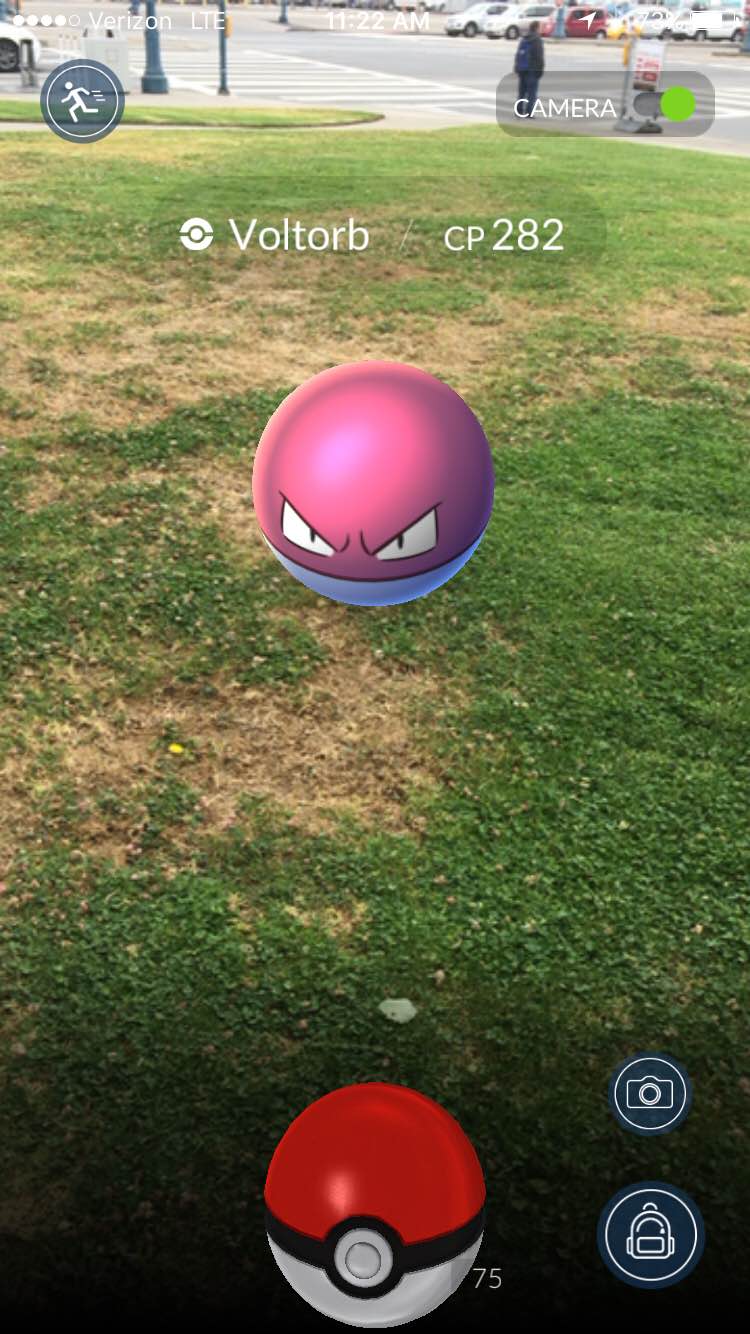
You can also evolve Pokémon, but rather than doing this by training them up you use what are called "evolution shards", which are obtained by capturing several of the same Pokémon. It's a bit of a grind but an approach that's perhaps better suited to the platform.
Also different in Go is the battling mechanic, which is extremely basic and consists of two elements: tapping on the enemy Pokémon to hit it enough until its health bar depletes; and swiping left and right to avoid its attacks on you. Higher level Pokémon will be stronger and the game does account for type advantage - water is stronger against fire, fire trounces grass - but that's about as strategic as it gets.
It's a much more basic battle system than what Pokémon fans are used to, but one that obviously lends itself better for quick play. In Hanke's own words, "We're not trying to recreate the 3DS experience, we're trying to build something different."
While I appreciate that emulating a traditional Pokémon battling system probably wouldn't work here, I feel that the battle feature could easily be improved while remaining accessible and mobile-friendly. I hope it does, because right now I see gyms as being where the game's real longevity lies.
You teach me and I'll teach you
In March Pokémon Go went into public beta in Japan and it has since rolled out to a handful of other countries. Players are learning how Go will work, and in turn Niantic has learned what still needs polishing.
"One of the interesting things about a game like this is that the distribution of players, and the distribution of players to the teams, is out of our control," says Hanke when I ask about how the beta has helped them improve the game.
"So we have to anticipate the player density. In a big city like London, in a very popular park, you're obviously going to have a higher level of foot traffic with a higher concentration of players than you'd have in a rural area. But the game has to be tuned so it works in both cases.
"Getting that balance right and making sure it works in all places for all types of players is a focus of the beta test."
Ultimately, there are three main strands from Ingress which Pokémon Go draws on: discovery, which is catching wild Pokémon and finding points of interest; social interactions, which is about giving players the incentive to capture and improve gyms; and movement. Pokémon Go might be a video game, but it wants players to get out into the real world.
"You have to move in Pokémon Go to hatch your egg. That's a very direct learning from Ingress," says Hanke.
Niantic has found other interesting ways to encourage movement and discovery, such as a wristband that will be sold separately pair with your phone. A small vibration will alert the wearer that a wild Pokémon is nearby, and they can even use a small button on the device to try to catch the Pokémon - all without taking their phone out of their pocket.
The game's battery saving feature, meanwhile, uses the phone's gyroscope to detect when you're not holding your phone up. This means players don't have to walk around with their eyes glued to their phone. And yet, says Hanke, "It's a way to experience the game more frequently".
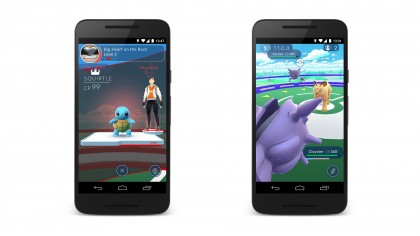
Pokémon Go will launch later this year, but Hanke won't say if there will be more betas before then.
While the demo gave me a good idea of how Go will play, it's impossible to say whether the final product will flourish into the game we all hope it will be. I say this because my brief experience with the game was isolated, bar from a few other players from the Pokémon Company, and so I look forward to seeing how the social side of the game unravels when millions of others get stuck in.
Hardcore series fans might not find the depth they've always dreamed of from a Pokémon MMO, but Go is a very different beast to the traditional games. It's started from the smartphone and built from there, rather than trying to cram the existing games into a new platform.
My biggest hope is that the Go's longevity won't be stifled by a lack of meaningful progression. I suspect, given its history with Ingress, Niantic has already thought about this - and I hope that we'll have reasons to keep jumping back into Pokémon Go long after it launches.
What's very encouraging is how much work is being done to ensure as many people as can pick up and enjoy the game from day one, regardless of where in the world they live.
"We're striving to make it complete and playable everywhere," says Hanke, "and if we hear it's not we'll strive to do something about it.
"But we feel pretty good about it."
Hugh Langley is the ex-News Editor of TechRadar. He had written for many magazines and websites including Business Insider, The Telegraph, IGN, Gizmodo, Entrepreneur Magazine, WIRED (UK), TrustedReviews, Business Insider Australia, Business Insider India, Business Insider Singapore, Wareable, The Ambient and more.
Hugh is now a correspondent at Business Insider covering Google and Alphabet, and has the unfortunate distinction of accidentally linking the TechRadar homepage to a rival publication.
